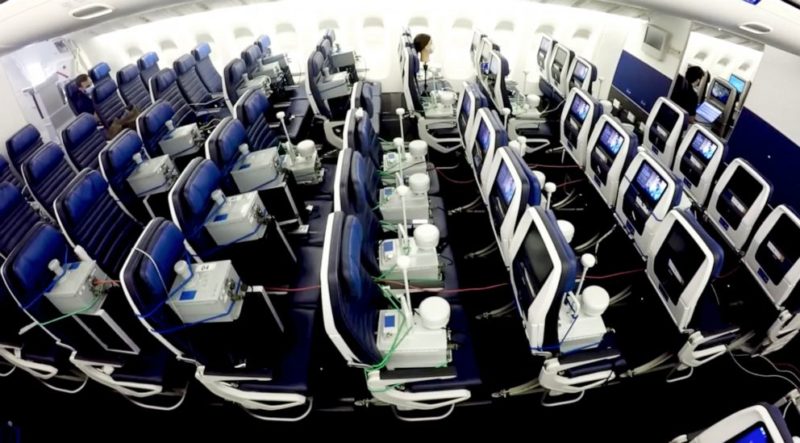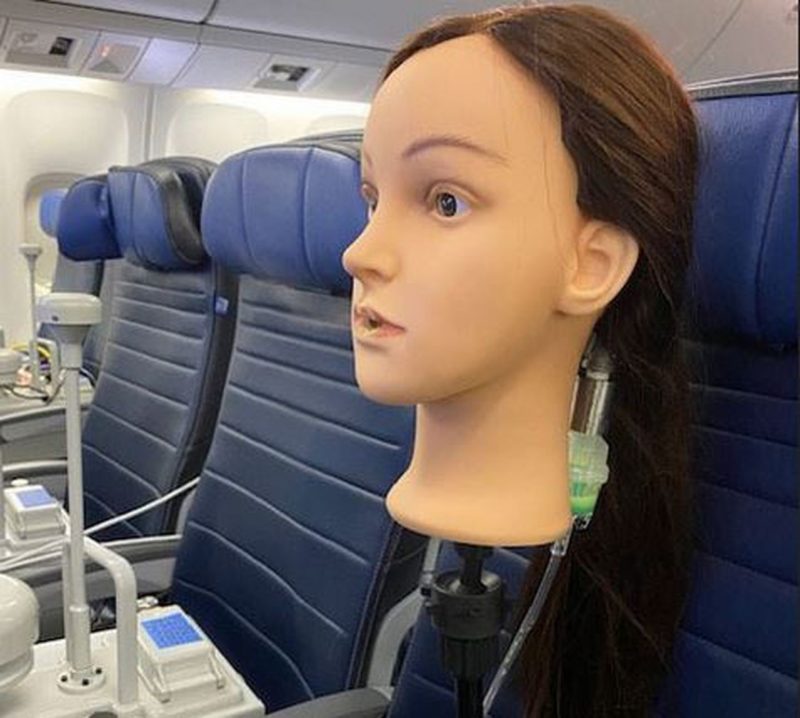United Airlines says that the risk of COVID-19 exposure onboard their aircraft is "virtually non-existent"; after a new study found that when masks are worn there is only a 0.003% chance of particles from a passenger entering the breathing space of passenger who is sitting beside them.
The study, conducted by the Department of Defense in partnership with United Airlines, was published Thursday. The testing found that “the overall exposure risk from aerosolized pathogens, like coronavirus, is very low”.
More than 300 aerosol releases, simulating a passenger infected with COVID-19, were performed over eight days using United Airlines Boeing 767-300 and 777-200 twin aisle aircraft.
The mannequin was equipped with an aerosol generator that allowed technicians to reproduce breathing and coughing. Each test released 180 million particles - equivalent to the number of particles that would be produced by thousands of coughs. They studied the way the mannequin's particles moved inside the cabin with a mask on and off.


“99.99% of those particles left the interior of the aircraft within six minutes” United Airlines Chief Communication Officer Josh Earnest said.
“While the tests did have some limitations, specifically it only considered a single infected passenger and did not attempt to gather data reflecting passenger movement about the cabin, the results are encouraging” said Cmdr. Joe Pope, US Transcom operations directorate liaison for the testing.
“For both the 777 and 767 airframes, the calculations show that about 54 flight hours are required for cumulative inhalation of an assumed infectious dose.”
“This data will help us develop strategies for cabin loading and seating configurations, to mitigate potential risk of person-to-person transmission of the aerosol particles.” Pope said.
Last week, the IATA reported that since the start of 2020 there have been 44 cases of COVID-19 reported, in which transmission is thought to have been associated with a flight journey, out of 1.2 billion passenger journeys in 2020.
“The US Transcom research provides further evidence that the risk of infection onboard an aircraft appears to be very low, and certainly lower than many other indoor environments.”
Alexandre de Juniac, IATA’s Director General and CEO
Air travel is still down around 70 percent when compared to last year, but there has been an uptick since the spring. Earlier this week the Transportation Security Administration (TSA) screened nearly a million people at US airports - the agency's highest number since mid-March.




